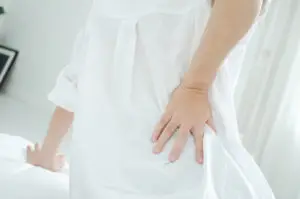
Choosing to move a loved one into a long-term nursing care facility is never an easy decision for families. However, in some cases, it’s the only option. Fortunately, many quality facilities exist with wonderful nurses and nursing assistants who do their jobs well and treat residents with respect and dignity, while providing the care that the residents need. Sadly, neglect still occurs far too often in nursing homes. Pressure sores are one consequence of neglect.
This guide provides additional information about the nature of pressure sores, the neglectful behaviors that lead to them, and steps you can take if your loved one has pressure sores from residing in a nursing home. We also address the physical ailments that can result from pressure sores and the financial impact that treatment can have on nursing home residents and their families.
What Are Pressure Sores?
If you’ve never heard the term pressure sore, you likely have heard one of the other names commonly used to describe damaged skin that occurs from being in one position too long. Sometimes medical professionals call them pressure ulcers, bedsores, or pressure injuries. The technical medical name for a pressure sore is a decubitus ulcer. Regardless of what you call them, pressure sores can be painful and cause severe skin damage and illness to those who suffer them.
When a person lies or sits in one position too long, the blood flow stops in some areas. This leaves an open wound in the skin. Pressure sores often occur where the skin lies closest to the bone, such as hips, back, ankles, heels, tailbone, shoulder blades, and elbows. Like other bodily injuries, pressure sores can be mild or severe. In fact, medical professionals categorize pressure sores into four stages to help them decide on the best course of treatment:
Stage I
At the beginning stages, you might not notice a pressure sore on your loved one unless you know exactly what you are looking for. A stage I pressure sore changes the skin in some way. You might notice a change in color, usually some redness. You might also notice the skin is warmer near the affected area. Stage I pressure sores don’t break the skin or impact the tissue underneath.
Stage II
The second stage of a pressure sore impacts the epidermis, which is the top layer of skin. In some cases, a sore might also affect the dermis, which are the layers below. Depending on the person, a stage II bedsore can be a shallow open wound or a pus-filled blister. In either case, drainage of the sore occurs and can cause more issues with cleanliness and skincare in the area around the sore.
Stage III
If a person suffers a stage III bedsore, this means that it has gone through the top layers of skin and into the subcutaneous layer, the final layer of skin made of connective tissues and fat. The subcutaneous layer of skin is also home to large nerve endings and blood vessels, so stage III pressure sores can cause nerve damage and a wide array of other medical issues. Bone and/or muscle may be visible depending on the severity of a stage III bedsore.
Stage IV
Pressure sores that extend into a person’s muscle or bone are stage IV and can be extremely painful. Like stage III ulcers, dead skin will be present as well as a good amount of drainage. In the most severe cases, someone with a stage IV pressure ulcer will need to undergo surgery.
Expect More, Receive More: Legal Support That Feels Like Family
How Does Neglect Lead to Pressure Sores?
Florida law and federal law requires nursing care facilities to provide a certain standard of care to its residents. Neglecting a resident is also against the law and can result in criminal charges. Whether neglect occurs because a nursing home is short-staffed and workers are overwhelmed or intentionally, vulnerable residents are at risk for pressure sores.
As previously explained, pressure sores occur when a person stays in one position for too long. Part of caring for many elders in nursing care facilities, or in their homes, includes making sure to frequently reposition them, so sores don’t develop. The presence of pressure sores strongly suggests caretakers are neglecting a resident.
Johns Hopkins, one of the most elite medical facilities and schools in the nation, recommends the following care for prevention of pressure sores:
- Repositioning and turning residents every two hours
- Ensuring that residents in wheelchairs sit up straight
- Repositioning residents in wheelchairs every 15 minutes, especially those who are slouching
- Use padding in beds and wheelchairs in areas where pressure sores might occur
- Keep skin clean and dry to make it less prone to sores
- Ensure proper nutrition and hydration, so sores can heal if they do occur
Potential Long-Term Medical Complications of Pressure Sores
Those who are immobile, bedridden, or unconscious face the highest risk for bedsores. Stage I and stage II pressure sores can be treated fairly easily. However, individuals who experience more severe sores, or those so serious that they are unstageable, can struggle for weeks, months, or years for a pressure sore to heal, especially in the presence of other ailments or conditions, such as diabetes.
Some of the long-term medical complications that can accompany pressure sores include:
- Pressure sores that are stage II and beyond are open wounds, which are automatically susceptible to infections. If an infection occurs in a bedsore, it can spread into the bloodstream, the heart, and the bones. Residents whose bedsores get infected can also suffer fevers, confusion, increased heart rate, and weakness throughout the body. In the most severe cases, pressure sores can be fatal.
- Part of the pathology of a pressure sore is the reduction or complete blockage of blood flow to the affected area. When doctors cannot restore blood flow because sores are too severe, they are forced to amputate the affected limb to save a person’s life. Amputation is not only physically painful but a monumental, traumatic life event that comes with a multitude of complications.
- Bedsores can require prolonged bed rest to heal. This can create a vicious cycle if a resident isn’t getting the care that he or she deserves. For example, a resident who regularly spends time in a wheelchair, but still has some mobility, develops a pressure sore. He or she must spend time in bed to heal, where they are at risk for bedsores in a different location.
- The University of Washington reports that autonomic dysreflexia is a long-term complication of pressure sores. Autonomic dysreflexia is the abnormal bodily reaction to stimuli in the nervous system. It most often plagues spinal cord injury victims who suffer from pressure sores. Symptoms include high blood pressure, muscle spasms, sweating, and changes in skin color.
Expenses Associated With Pressure Sore Treatment
If you or a loved one has developed pressure sores because of caregiver neglect, you potentially face astronomical related expenses. The exact amount will depend on the severity of the bedsores and the steps you must go through to deal with the neglect that led to them.
Some examples of costs associated with the treatment of pressure sores include:
- Medical treatment costs. You will incur additional medical expenses to treat pressure sores, but you likely haven’t thought of everything that this can entail. In addition to doctor visits, you or your loved one might need surgery in severe cases. Treating severe pressure sores can also require diagnostic imaging tests to evaluate the extent of the injury. Additionally, those who suffer from pressure sores likely need pain medication in addition to antibiotics necessary to prevent infection. When pressure sores won’t heal easily, these costs can go on for months and accumulate quickly.
- Mental health service costs. If the development of pressure sores is a small part of a larger pattern of abuse and neglect in a nursing care facility, it’s likely the victim has also suffered emotional trauma. Some vulnerable to pressure sores suffer from dementia or are in a permanent vegetative state (PVS). Others will need to work through the trauma of their abuse and neglect with a psychologist, psychiatrist, or counselor. This can take months or years, depending on the extent of the abuse and neglect. In fact, some victims need mental health services for life after such trauma.
- Transfer costs. If your loved one has been neglected to the point that he or she developed serious pressure sores, it’s highly likely that you won’t want the elder to remain in his or her current facility; more likely, you will want to find a new facility for abused elders if their in-home caregiver neglected them. In either case, transferring a resident to a different facility can be costly as well as inconvenient. Sometimes, families have to transfer loved ones to facilities further away or pay a higher amount for treatment at a different facility or for private in-home care.
What Should You Do if a Loved One Has Pressure Sores?
The presence of pressure sores is a strong indicator that your loved one is being neglected by his or her caregivers. Pressure sores don’t automatically mean neglect, but they should inspire you to further investigate. If you notice pressure sores on your loved one, you should follow these tips:
Report Pressure Sores to the Individuals in Charge
Your first step when you find a pressure sore on a loved one is to immediately report it to the charge nurse on duty and send written notice to the administration about your findings. This allows those in charge to take immediate action to treat pressure sores and prevent your loved one from developing any complications. If your loved one suffered sores while receiving in-home health care, you need to contact the agency responsible for the care and make a report.
Keep Detailed Records
Record the time and date you noticed pressure sores on your loved one as well as recording any conversations that you had with nursing assistants, charge nurses, and administration. You should expect a response and a treatment plan when you report the pressure sores. If you must take legal action, you need to have records of your communication with caretakers to support your case.
Take Appropriate Photographs
When you report pressure sores, you can hear excuses, apologies, or both. In the worst-case scenario, the administration or home health care agency will deny the existence of the sores. In extreme cases, medical professionals might fraudulently cover up the sores on medical records. Photographic evidence is difficult to dispute. If you have the chance, you should get photos of any pressure sores and keep them if you choose to take legal action down the road.
File a Complaint With DCF
Pressure sores are such a strong sign of neglect that you should report the facility or in-home caregiver to the Florida Department of Children and Families (DCF). DCF accepts complaints and online submissions for elders and vulnerable adults who have suffered abuse or neglect. You can call the DCF hotline at 1-800-96ABUSE or fill out a complaint online. Once the agency receives your complaint, it will initiate an investigation. Depending on its findings, DCF can also share information with law enforcement to bring criminal charges.
A Lawyer Can Help You Get to the Bottom of Your Loved One’s Pressure Sores
If you or a loved one has experienced pressure sores at the hands of caregivers, Florida law entitles you to seek compensation for damages related to the sores and their treatment. An experienced nursing home or elder abuse attorney can guide you through the complaint process, investigate the neglect, and help you hold responsible parties liable for their actions. This process may include gathering medical records, witness statements, and testimonies from expert witnesses.
Not only do you deserve compensation for the pain of coping with bedsores, but also you need to take action to ensure those who neglected you or your loved one don’t do the same to others. Additionally, an elder abuse attorney can handle the bothersome aspects of your case, such as paperwork, while you focus on healing or helping your loved one heal from their pressure sores.






